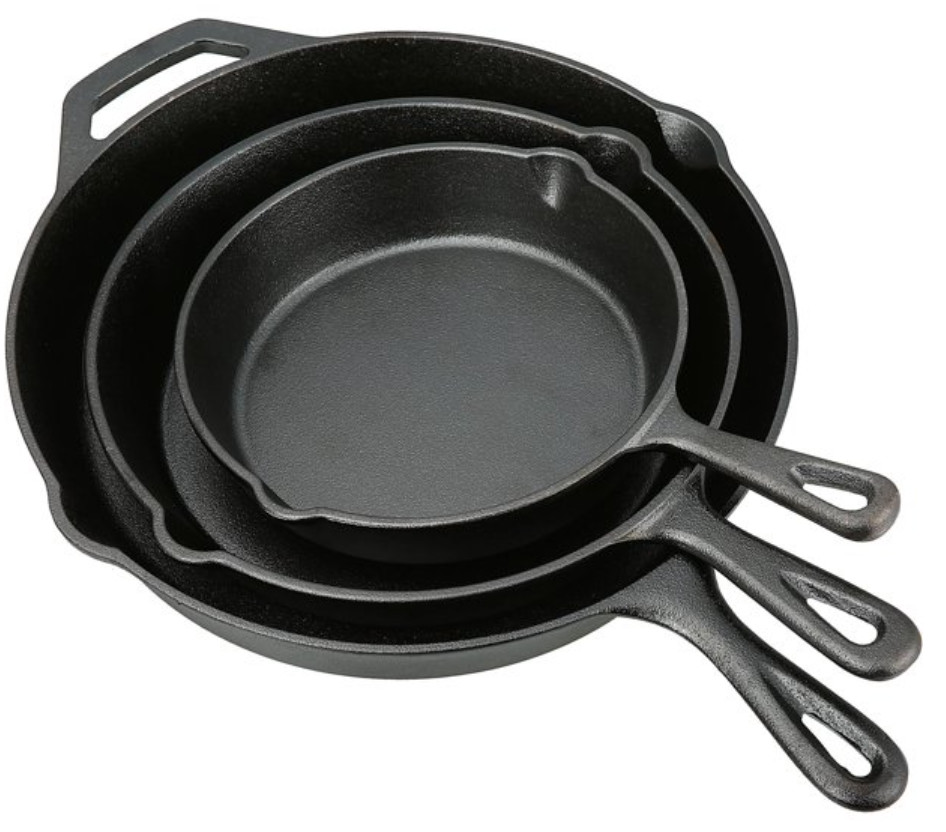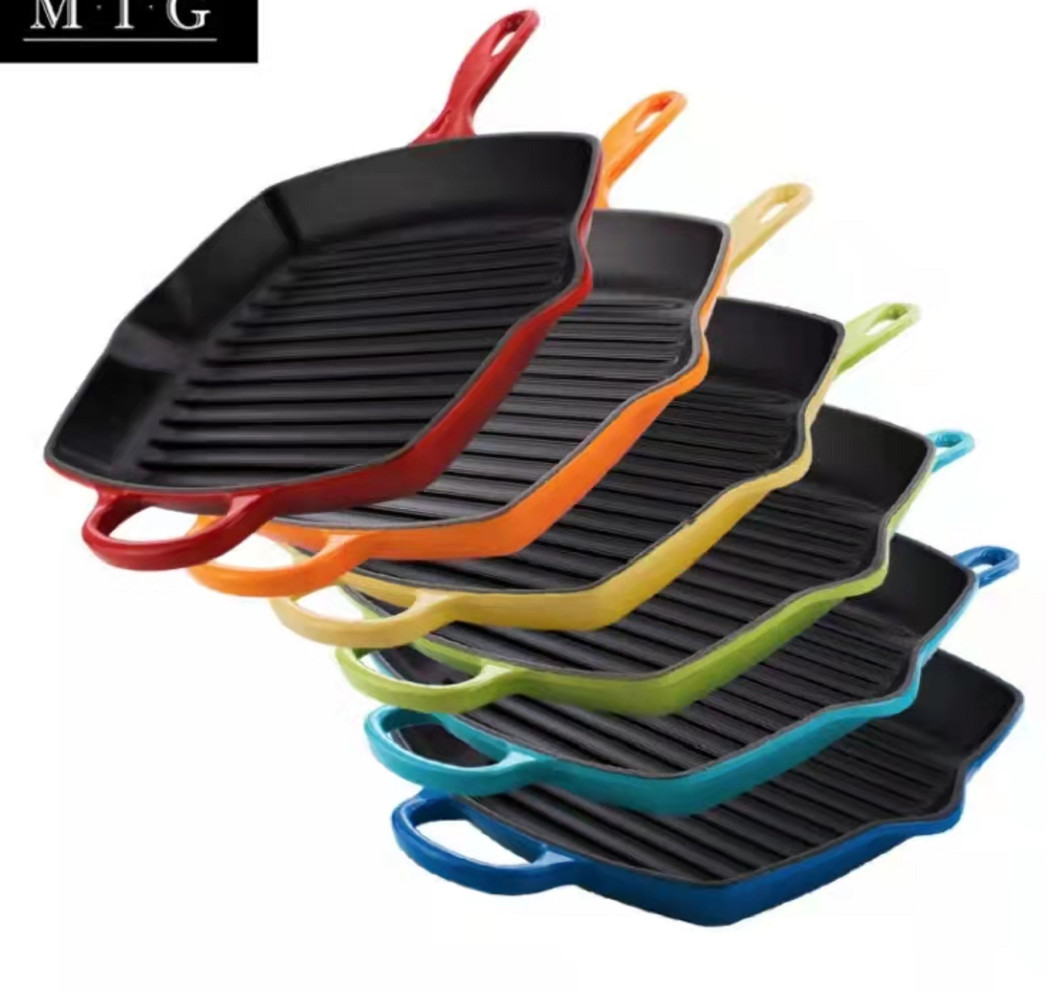- 150m Southwards, West DingWei Road, Nanlou Village, Changan Town, GaoCheng Area, Shijiazhuang, Hebei, China
- monica@foundryasia.com
Jun. 12, 2023 18:48 Bali menyang dhaptar
APA TEGESÉ CAST IRON COOKWARE
Apa piranti masak wesi:
Piranti masak wesi yaiku piranti masak tugas abot sing digawe saka wesi tuang sing regane kanggo nahan panas, daya tahan, bisa digunakake ing suhu sing dhuwur banget, lan masak sing ora lengket nalika dibumbui kanthi bener.
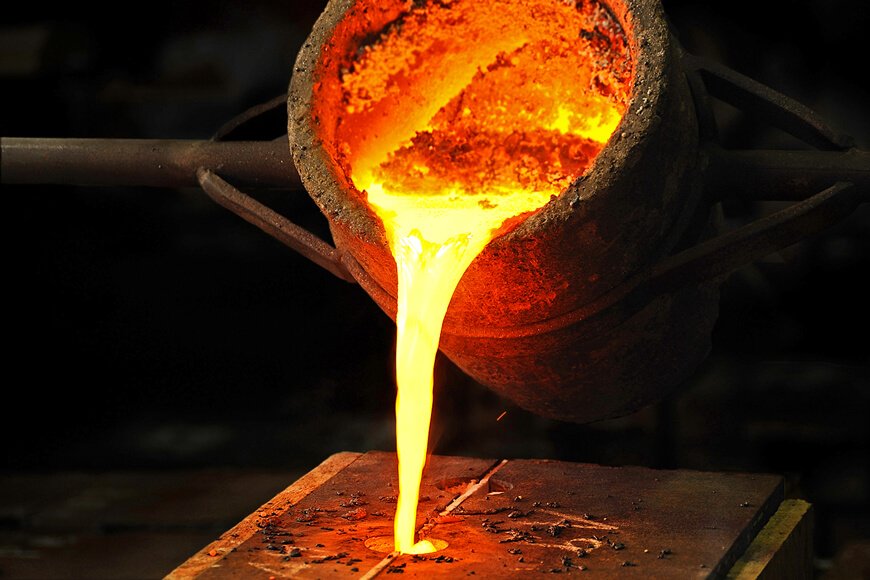
Sejarah peralatan masak wesi
In Asia, particularly China, India, Korea and Japan, there is a long history of cooking with cast iron vessels. The first mention of a cast-iron kettle in English appeared in 679 or 680, though this wasn't the first use of metal vessels for cooking. The term pot came into use in 1180. Both terms referred to a vessel capable of withstanding the direct heat of a fire. Cast-iron cauldrons and cooking pots were valued as kitchen items for their durability and their ability to retain heat evenly, thus improving the quality of cooked meals.
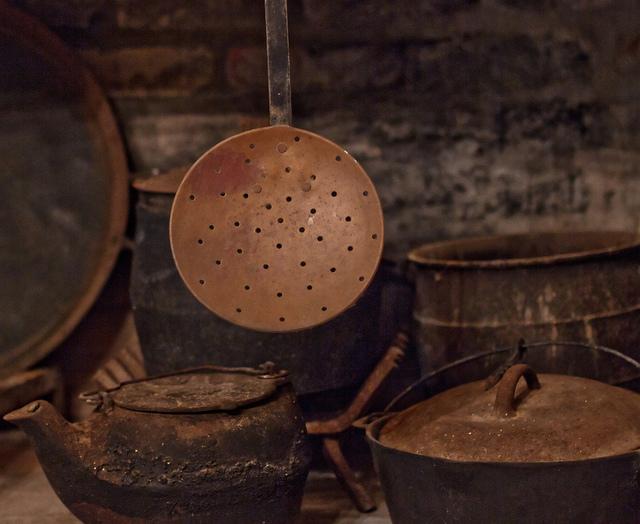
Ing Eropah lan Amerika Serikat, sadurunge kompor pawon ing tengah abad kaping 19, dhaharan dimasak ing perapian, lan panci masak lan wajan dirancang kanggo digunakake ing perapian, utawa digantung ing njero.
Cast-iron pots were made with handles to allow them to be hung over a fire, or with legs so that they could stand in the coals. In addition to Dutch ovens with three or four feet, which Abraham Darby I secured a patent in 1708 to produce, a commonly used cast-iron cooking pan called a spider had a handle and three legs allowing it to stand upright over campfires as well as in the coals and ashes of a fireplace.
Panci lan panci masak kanthi dhasar tanpa sikil lan warata digunakake nalika kompor masak dadi populer; wektu iki pungkasan abad ka-19 weruh introduksi saka flat
cast-iron skillet.
Peralatan masak wesi iki misuwur banget ing kalangan ibu rumah tangga ing paruh pertama abad kaping 20. Iku piranti masak sing murah, nanging tahan lama. Umume rumah tangga Amerika duwe paling ora siji panci masak wesi.
Ing abad kaping 20 uga ana introduksi lan popularisasi peralatan masak wesi sing dilapisi enamel.
Today, of the large selection of cookware that can be purchased from kitchen suppliers, cast iron comprises only a small fraction. However, the durability and reliability of cast iron as a cooking tool has ensured its survival. Cast-iron pots and pans from the 19th and 20th century continue to see daily use to the present day. They are also highly sought after by antique collectors and dealers. Cast iron has also seen a resurgence of its popularity in specialty markets. Through cooking shows, celebrity chefs have brought renewed attention to traditional cooking methods, especially the use of cast iron.
Produk sing penting
Jinis piranti masak wesi kalebu wajan, oven Walanda, wajan, wafel, panini press, deep fryer, wajan, fondu lan potjies.
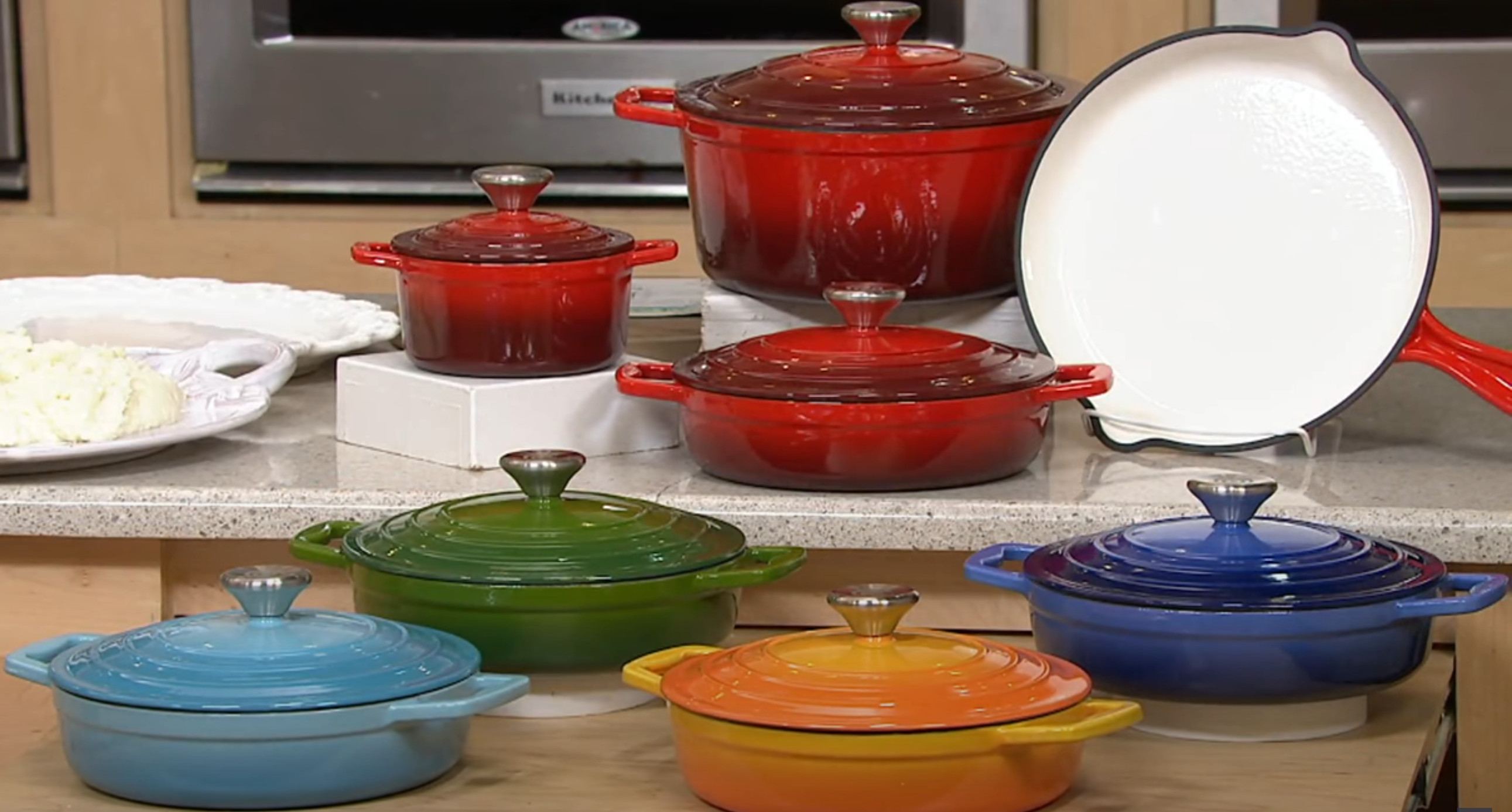
Keuntungan saka peralatan masak wesi
Cast iron's ability to withstand and maintain very high cooking temperatures makes it a common choice for searing or frying, and its excellent heat retention makes it a good option for long-cooking stews or braised dishes.
Because cast-iron skillets can develop a "non-stick" surface when cared for properly, they are excellent for frying potatoes or preparing stir-fries. Some cooks consider cast iron a good choice for egg dishes, while others feel the iron adds an off-flavor to eggs. Other uses of cast-iron pans include baking, for instance for making cornbread, cobblers and cakes.
Many recipes call for the use of a cast-iron skillet or pot, especially so that the dish can be initially seared or fried on the stovetop then transferred into the oven, pan and all, to finish baking. Likewise, cast-iron skillets can double as baking dishes. This differs from many other cooking pots, which have varying components that may be damaged by the excessive temperatures of 400 °F (204 °C) or more.
-
Product introduction of Changan Cast Iron Co., LTD
KabarJan.24,2024
-
The Impact of the Leidenfrost Effect on Non-Stick Properties of Cast Iron Titanium Coated Cookware
KabarJan.24,2024
-
Njelajah Divide Kuliner——Casseroles Iron vs Casseroles Biasa
KabarJanuari 03, 2024
-
Bengkel Pengemasan Diatur Ulang karo Rak lan Panyimpenan 3D kanggo Barang
Kabar29 Desember 2023
-
Ngresiki pot enamel wesi bekas bisa ditindakake kanthi efektif kanthi langkah-langkah ing ngisor iki:
Kabar27 Desember 2023
-
Struktur metalografi kanggo enamel ing wesi tuang
Kabar27 Desember 2023
